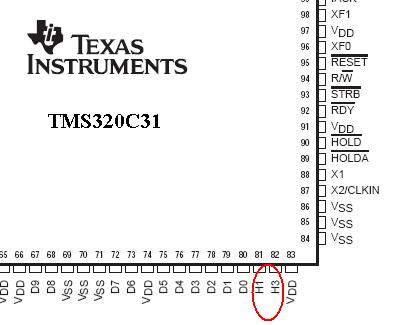powersys
Advanced Member level 1
tms320c31 dsp,
I found 'H1' and 'H3' pins on the TMS320C31 DSP chip. These terms, especially the 'H1', is used frequently in TMS320C31 DSP related user guides. Unfortunately, I have no idea what they are. If I'm not mistaken, it's something to do with 'clock'. Kindly advise. Thanks.

I found 'H1' and 'H3' pins on the TMS320C31 DSP chip. These terms, especially the 'H1', is used frequently in TMS320C31 DSP related user guides. Unfortunately, I have no idea what they are. If I'm not mistaken, it's something to do with 'clock'. Kindly advise. Thanks.
